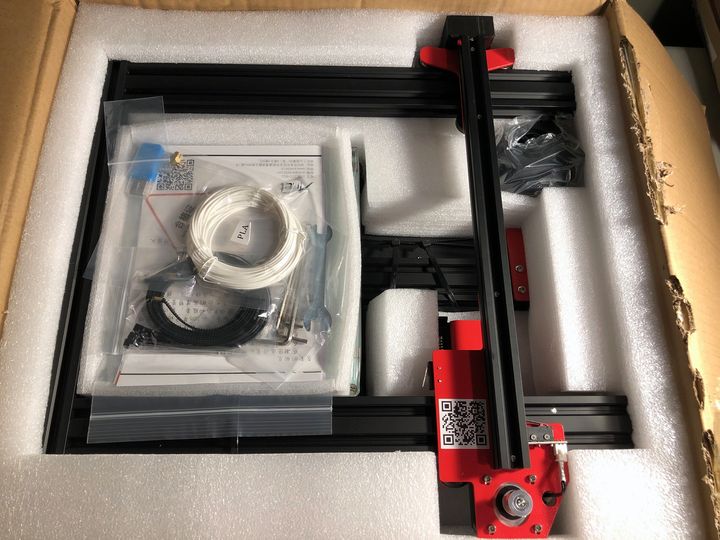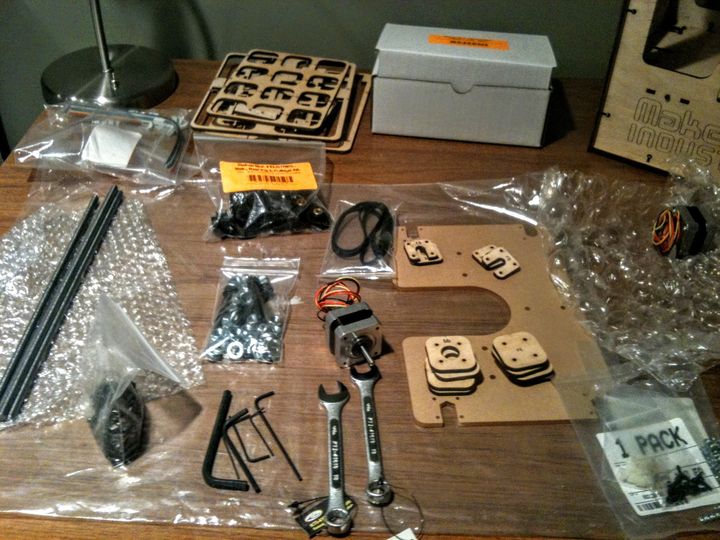
For years there have been two types of 3D printers: kits and assembled. I no longer think that is the case.
While the initial commercial 3D printers of the 1980s were delivered as complete and functioning devices, something happened in the 2010s as the original FDM patents expired. Countless startup companies launched to take advantage of the suddenly-free-to-use 3D printing technology, and in most cases their first products were 3D printer kits.
When I say “kits”, I mean a box full of bags of small parts, all of which required painstaking assembly. The first device I built took a couple dozen hours to work through before it was slightly operational. Assembly involved not only bolt installation, but also soldering, winding wires and even baking to solder things together. It was daunting to undertake such an assembly, but worthwhile in all that was learned along the way.
But that very challenge posed a significant barrier to anyone entering the desktop 3D printer zone: many people simply could not handle a comprehensive assembly process. Thus some vendors smartly began to offer pre-assembled versions of their products. This opened up the market considerably, as those unable to handle kits could then use 3D printers.
However, the consumer market crashed shortly thereafter. But 3D printer kits are still offered.
Or are they? Things seem to have changed significantly in this regard, at least from certain manufacturers.
The Problem With 3D Printer Kits

For a given 3D printer model, the kit version is typically less expensive to purchase and thus more attractive to some buyers. However, it does come with the requirement to spend time doing the assembly.
Assembled kits are a bit of a risk for some 3D printer manufacturers, particularly if the device is not specifically designed for end-user assembly. For example, in very early 3D printer kits, the hot end was made by having the assembler manually wind nichrome wire around a metal cylinder. This wire would heat up to soften filament before extrusion.
The problem was that each assembler might wind the thin wire around the cylinder a different number of times. Thus it ended up that each assembled unit would have slightly different characteristics. In the case of the winding wire, what would be the correct setting to achieve a given temperature? It differed on each machine. Other components would generate similar conundrums.
How 3D Printer Kits Evolved
Over time I began to see a bit of a pattern, which I hadn’t notice until recently. I saw a new desktop 3D printer being offered, and as usual it was a kit. However, the manufacturer boasted that the device required “only three bolts” and could be assembled in less than 3 minutes!
Then it hit me: every year as I attempted to build a 3D printer from a kit it had been becoming a simpler operation. Now in many cases you literally bolt a couple of large sections together and plug in a cable or three.
Is that “assembling”? I suppose it technically is, but when anyone can build an entire 3D printer in only a couple of minutes what is the practical difference between that and a pre-assembled 3D printer?
In some cases the assembled 3D printers actually take longer to put together than the kits, as these devices often come equipped with an unknown number of styrofoam blocks, yellow tape, tie-wraps and cardboard to ensure safe shipping. By the time you find and remove all that crap, you might have been able to assemble one of the kits. Or two.
As of today, most 3D printer kits are no longer the daunting challenge they once were, as manufacturers have creatively designed their products for not only efficient shipping, but also very rapid assembly.
There’s one exception, however, and that’s Prusa Research, whose kits still involve a great many parts and can take some hours to build. I think they’re a special case, however, as they address the needs of both by supplying kits and assembled versions at a slightly higher price. If you really want to spend time building a 3D printer from parts and learn a great deal along the way, Prusa Research is there for you.
The Future of 3D Printer Kits
The current state of 3D printer kits is just about as close to being already assembled as one could imagine: how could you have less than three bolts?
There is only one step remaining for these vendors to take: develop truly collapsible 3D printers that merely need to be unfolded when they are received. If so, buyers would merely pop open the machines and power them on. Bonus: the machines could become a lot more portable.
Maybe it’s time to stop referring to 3D printer kits as “kits” unless there are a sufficient number of parts. Like more than three.
